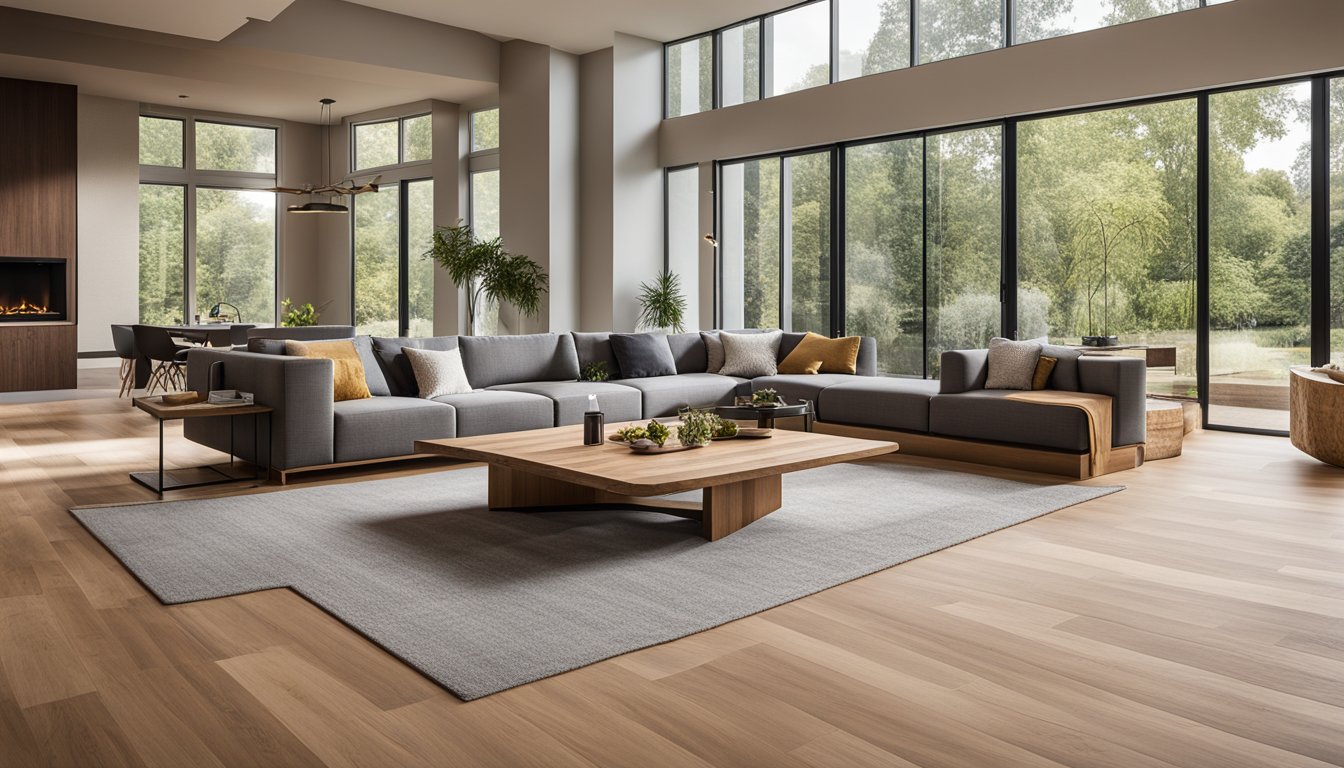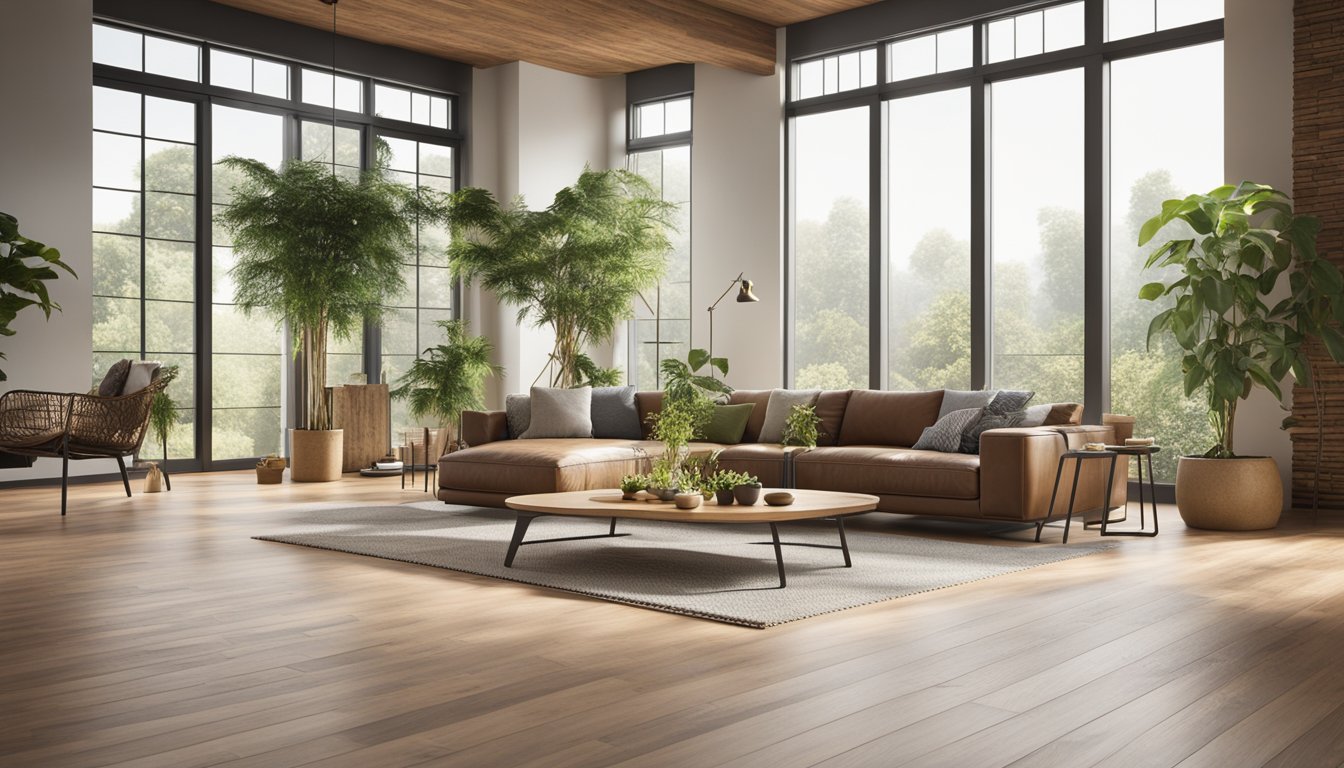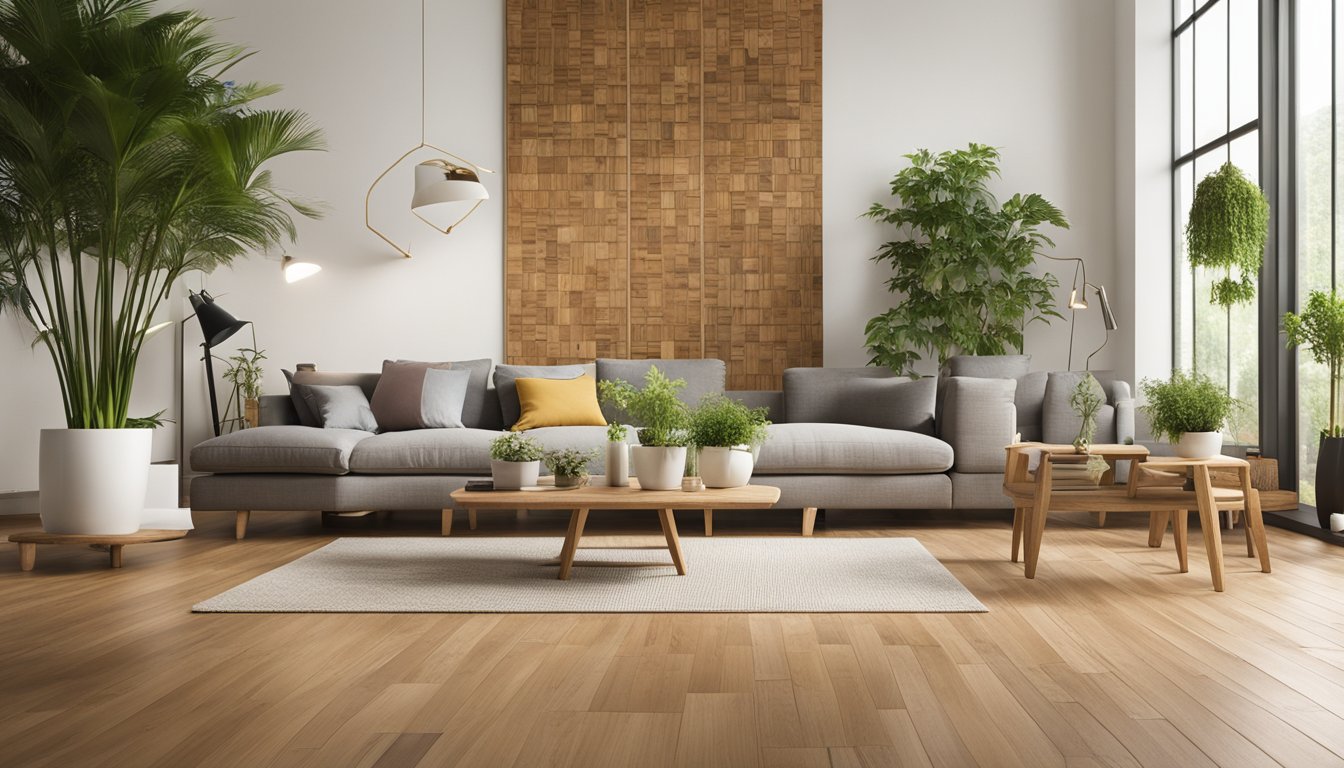Late updated: 01 Nov 2024 08:11
Written by: Daniel Harper
Top Sustainable Flooring Trends For 2024: Innovations Shaping Eco-Friendly Homes
In 2024, sustainable flooring trends are not just about aesthetics; they reflect a growing commitment to eco-conscious living. As we explore the latest developments, we're seeing an exciting blend of innovative materials and design styles that consider both environmental impact and visual appeal. Eco-friendly materials are increasingly popular, offering both sustainability and durability, making them an ideal choice for modern interior design.

The flooring landscape has witnessed a shift towards integrating timeless elegance with cutting-edge, sustainable solutions. This year, the focus is not only on reducing our carbon footprint but also on selecting flooring that complements various design styles. Options like reclaimed wood, bamboo, and cork prove to be both versatile and environmentally sustainable, catering to those who want to embody mindful living.
As more people seek to create homes that reflect their values, sustainable flooring options offer a way to enhance interiors without compromising the planet. We are seeing an embrace of materials that regenerate quickly and have minimal impact on the environment. This movement aligns with a broader trend towards creating spaces that are not only beautiful but also echo a deeper commitment to responsible living.
Key Takeaways
- Eco-friendly materials combine sustainability and style.
- Design trends merge timeless looks with sustainable innovations.
- Sustainable choices cater to eco-conscious lifestyles.
Exploring Eco-Friendly Materials in Flooring
Our focus on eco-friendly materials reflects a collective effort to embrace sustainability without compromising design or functionality. Let's examine how reclaimed wood, natural and regenerated options, and innovations in luxury vinyl tile are shaping these flooring trends.
The Rise of Reclaimed Wood and Its Benefits
Reclaimed wood is seeing a resurgence, providing not only aesthetic beauty but also significant environmental benefits. By repurposing materials from old structures, we reduce the need for new timber, conserving forests and energy. Its unique character and history add an unmatched charm to interiors.
Using reclaimed wood supports sustainable flooring practices by reducing landfill waste. It often comes from seasoned lumber, offering increased durability compared to newly harvested wood. This makes it an attractive choice for both residential and commercial spaces, granting longevity alongside its environmental credentials.
Natural and Regenerated Options
Natural materials like cork, bamboo, and sisal are popular choices in sustainable flooring options because they are renewable and biodegradable. Regenerated materials, such as recycled rubber or composite boards, add to the mix by offering durability and water resistance.
Bamboo, in particular, stands out due to its rapid growth cycle, which makes it both a sustainable choice and a financially appealing one. Cork is harvested from regenerating tree bark without harming the trees, providing resilient and comfortable flooring that mitigates noise. These materials ensure eco-friendly flooring solutions that meet both aesthetic and practical needs.
Innovations in Luxury Vinyl Tile (LVT)
Luxury Vinyl Tile (LVT) represents a fascinating development in commercial and residential flooring. Modern manufacturing techniques have made LVT incredibly versatile, mimicking natural materials like wood or stone while maintaining a low environmental impact.
Recent innovations in LVT production focus on minimising the use of harmful chemicals, making these tiles safer for indoor air quality. Advances also include the incorporation of recycled content, adding to its sustainability credentials. Its ease of installation and maintenance further enhances its appeal, making it suitable for a variety of spaces.
Collectively, these eco-friendly materials reflect a broader trend towards sustainable and responsible design in flooring, helping us create healthy living and working environments.
Design Trends Shaping Sustainable Flooring

Sustainable flooring design is evolving with exciting trends that blend timeless aesthetics with modern innovations. From earthy colour palettes to bold and subtle patterns, these trends highlight a thoughtful approach to materials and design, creating a harmonious balance between form and function in our living spaces.
Embracing the Warmth of Earthy Tones
In 2024, earthy tones take centre stage in sustainable flooring, adding warmth and depth to interiors. These natural shades are integrated into flooring treatments such as cork, bamboo, and reclaimed wood.
From rich terracotta and burnt sienna to soft beiges and muted greens, these colour choices enhance comfort and cosiness. They seamlessly complement a range of décor styles, making them versatile options. The use of these colours is not just aesthetic; it reflects a deeper connection to nature, encouraging a peaceful and inviting home environment.
Patterns with a Purpose: Bold and Understated
Patterns are a significant element of flooring design, providing character and interest to spaces. This year, we see a move towards both bold geometric patterns and understated, elegant designs. Bold patterns, often seen in patterned tiles and rugs, are incorporated into homes to make a statement.
Meanwhile, understated designs focus on subtler aesthetic appeal, like soft, flowing lines that add texture without overwhelming a room. The use of patterns in sustainable flooring is intentional, often inspired by nature, and crafted from sustainable materials, ensuring that they support both style and environmental responsibility.
The Synergy of Functionality and Aesthetics in Biophilic Design
Biophilic design is a key trend that brings the outside world into our homes, creating spaces that promote well-being. This design approach utilises materials like natural wood, stone, and fibres to enrich our living environments.
In flooring, biophilic design emphasises not only sustainability but also the functional adaptation to modern lifestyles, such as through engineered wood compatible with underfloor heating. The combination of functionality and beauty is crucial, with organic materials offering both durability and a connection to nature, enhancing our physical and mental comfort.
Retro Vibes with a Modern Twist in Flooring
Incorporating retro elements gives flooring a nostalgic yet modern appeal. Trends include wide plank flooring and parquet designs, which bring back classic styles with updated features. These designs cater to the love of vintage aesthetics while integrating contemporary sustainability measures.
By utilising recycled or reclaimed materials, these retro styles minimise environmental impact. Vintage furniture pairs beautifully with these floors, creating cohesive and stylish interiors. This blend of old and new, sustainability and elegance, allows us to enjoy timeless floors that also meet today’s ecological standards.
Frequently Asked Questions

As we look forward to the sustainable flooring trends of 2024, several eco-friendly options are poised to lead the way. Innovations in materials and designs reflect a growing commitment to environmental responsibility in home interiors.
What are the latest eco-friendly flooring solutions expected to dominate interiors in 2024?
In 2024, we anticipate seeing cork flooring take a forefront position due to its renewable nature and insulating properties. Bamboo is another popular choice, cherished for its rapid regenerative abilities and strength. These materials not only provide a sustainable option but also offer durability and unique aesthetic appeal.
Which types of flooring are considered most sustainable for residential applications this year?
Cork and bamboo are among the most sustainable materials for residential flooring. They regenerate quickly and leave a smaller environmental footprint. Alongside these, reclaimed wood flooring is gaining traction, offering a classic look while ensuring the reuse of existing resources.
How does vinyl flooring fit into the sustainability trends for home interiors in 2024?
Vinyl flooring, particularly luxury vinyl planks (LVP), fits into the sustainability narrative by often being produced with recycled materials. Manufacturers are focusing on low-VOC products to improve indoor air quality. Its durability makes it a practical choice for homes with high foot traffic, while its aesthetic variety appeals to diverse tastes.
Are there any new colour trends in sustainable flooring emerging for 2024?
Earthy tones and natural finishes are taking centre stage in 2024. Expect to see a shift towards hues that mimic the outdoors, such as warm browns and soft greens. These colours not only complement eco-friendly materials but also provide a calming, natural atmosphere within interiors.
What advancements in laminate flooring are contributing to environmentally conscious design in 2024?
Laminate flooring has seen technological advancements, allowing for the inclusion of recycled content and the use of better manufacturing processes. This year, enhanced techniques reduce emissions and waste, making laminate a more environmentally sound choice. Additionally, it replicates natural wood and stone appearances at a lower cost and environmental impact.
Which sustainable flooring options are becoming increasingly popular in contemporary living spaces?
In contemporary living spaces, hybrid flooring options like engineered wood are becoming popular. These combine the best features of wood with a stronger core, providing durability while using less hardwood. Engineered wood offers a luxurious look with better moisture resistance and stability, making it ideal for contemporary home settings.
